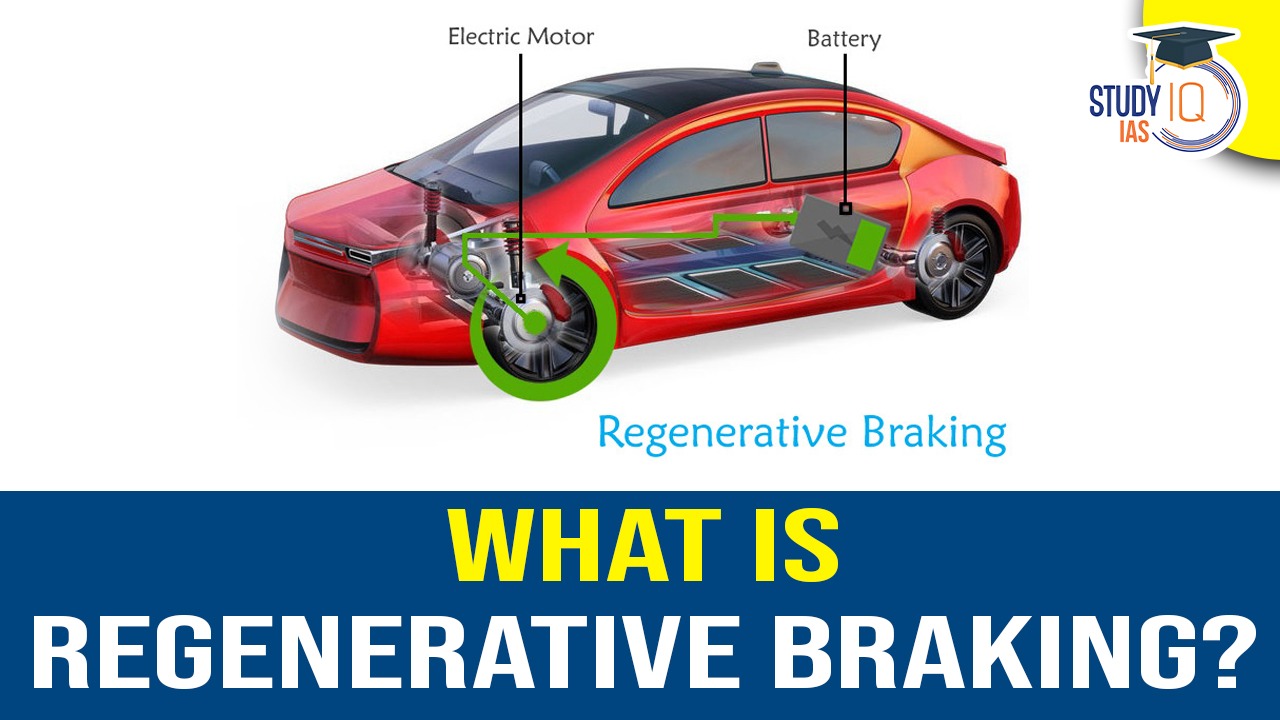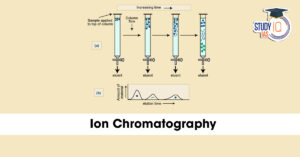Table of Contents
Context: Regenerative braking is a crucial mechanism in electric vehicles that enhances their energy efficiency.
What is Braking?
- Definition: Braking is the mechanism that slows down a moving vehicle by removing kinetic energy.
- Disc Brake:
- Mechanism: Brake pads press against a disc attached to spinning wheels, using friction to convert kinetic energy into heat.
- Design: Discs have holes to dissipate heat effectively.
- Induction Brake:
- Mechanism: Uses magnets to induce circular electric currents in a conductive wheel, creating an opposing magnetic field that slows the wheel.
- Energy Conversion: Converts kinetic energy into heat through electrical resistance in the metal wheel.
What is Regenerative Braking?
- Definition: A system that converts kinetic energy into a form that can be stored and reused.
- Dynamic Braking: Regenerative braking is a type of dynamic braking, specifically recovering energy for future use.
- Electric Vehicles:
- Battery and Motor: The battery stores electrical energy, powering the traction motor that propels the vehicle.
- Energy Recovery: During braking, the motor acts as a generator, converting mechanical energy back into electrical energy, which is stored in the battery.
- Other Braking:
- Rheostatic Braking: Another dynamic braking type where the electrical energy is dissipated as heat through resistors.
- Dual Systems: Vehicles often use both regenerative and rheostatic braking to handle excess energy or immediate needs.
How Does a Motor Become a Generator?
- Motor Components:
- Rotor: The rotating part.
- Stator: The stationary part, consisting of permanent magnets or electromagnets.
- Function:
- Lorentz Force: When a charged particle moves in a magnetic field, it experiences a force.
- Coiling: Opposite directions of current in the coil ends create opposing forces, converting electrical energy to rotary motion.
- Generator Function: Mechanical energy turns the rotor, inducing a current in the stator. Switching between motor and generator modes enables regenerative braking.
Downsides of Regenerative Braking
Limitations
- Incomplete Stopping: Regenerative braking alone often can’t stop a vehicle completely, requiring a conventional system to dissipate some kinetic energy.
- Hill Stops: Conventional brakes are needed to prevent backsliding downhill.
- Energy Recovery at Low Speed: Efficiency drops as the vehicle slows down, but is beneficial in stop-start traffic.
Other Energy Recovery Methods
- Energy Conversion Forms: The design depends on the target form of energy.
- Flywheels:
- Function: Convert mechanical energy to angular momentum.
- Advantages: Rapid energy reception and exponential energy storage with speed.
- Applications: Used in Formula One for output management and in submarines and satellites for navigation.
- Compressed Air:
- Mechanism: Kinetic energy can power a pump to compress air.
- Usage: Useful for starting internal combustion engines.


 Advanced Air Defence Radars: Types, Comp...
Advanced Air Defence Radars: Types, Comp...
 Ion Chromatography, Working and Applicat...
Ion Chromatography, Working and Applicat...
 Broadly Neutralising Antibodies (bNAbs):...
Broadly Neutralising Antibodies (bNAbs):...

























